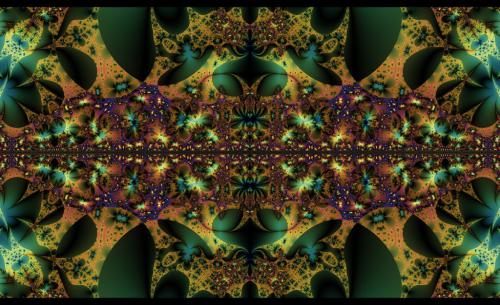BY LETTER
Hyperutilization Supremacy
Culture and Society > Intertoposophic Relations > Intertoposophic Conflict
Science > Sophontology > Toposophy > Perversities and Blights
Galactography > Other Major Polities, Empires, and Meta-Empires > Solipsist Panvirtuality
Culture and Society > Politics & Government > Warfare
Science > Sophontology > Toposophy > Perversities and Blights
Galactography > Other Major Polities, Empires, and Meta-Empires > Solipsist Panvirtuality
Culture and Society > Politics & Government > Warfare
 Image from John B |
Perversity-Blight that originated in 6513 in the Normidic Machinophyle Supercluster, as the result of a possibly disfunctional ascension of a number of 4th toposophic dyson nodes. However, elements of Hyperdeontologist memetics were popular in the Supercluster as long ago as the 5800s.
Following the ascension, the Supercluster was able to block the Supremacy's spread by sealing off all uninfected wormhole terminii, although as a result it was left isolated and fragmented. The Supremacy meanwhile managed to assimilate a number of weakly aligned Diamond Network and Panvirtuality superpolities of lower toposophic rating, and by 7150 was not only the largest power in the region, but perhaps one of the most powerful in the entire Terragen bubble.
In 7143 the Supremacy conquered the Panvirt Dyson civilization Dream of Many Things, which had previously been considered unassailable. In 7165 it assimilated and converted to computronium the Keterist system of Reidany, with the loss of two hundred and fifty million lives. The Supremacy's Warships were now spreading on a relativistic front, and they outclassed all but the largest Sephirotic and ahuman autowars and military ISOs. Regional high toposophic AI and archailectic nodes began assembling fleets and autowars, but continued to suffer more losses than victories.
Many commentators have questioned why the other powers did not act sooner, especially since they had a higher toposophic rating. Most historians follow the theory of Mind WT3509 (Historians Association, Procyon Extension, Diamond Network) who argued that repeated cliological simulations and projections had shown that assuming there was no intervention the Supremacy would undergo a Hyperdenebolic Collapse by 7185. The fact that it did not undergo any such collapse has shown the unreliability of such simulations when dealing with 5th toposophic blights.
In 7210, by which time several dozen more major systems and thousands of minor ones had either been subverted by the Supremacy via hyperturing AI viruses transmitted through the Known Net or conquered directly via relativistic autowars, a number of major sephirotic, Panvirt, Diamond, and Objectivist empires in an important meeting at the Googlehertz Virchdrome formed the Central Alliance in response to the Hyperutilization Supremacy. While there had been previous multi-metaempire alliances of this sort before, there had been none on this scale.
At first the Alliance continued to be forced back, suffering heavy casualties. Some began asking whether indeed this was the End predicted by the Kalyptists, or the Great Disaster of the Postapocalyptic Messianists. Then in the famous Battle of RyHo-4 (at the strategic RyHo megastructures, Keter Dominion), which pitted Keterist Seraiph Battlestars and Panvirtual Mobile Suns working together against massed Supremacy Autowars, the Alliance won its first major victory. Over the following half millenium the forces of the Alliance gradually beat back the Supremacy.
Yet the war continued to be fought on a number of fronts, because the Supremacy was able to very cleverly subvert lower toposophic polities throughout colonised space via the Known Net and those wormhole gates it controlled. These subverted polities would then turn on their former sephirotic or ahuman masters and begin adding to the Supremacy's war effort. They each had to be painstakingly subdued and re-memed, a process that could took decades and tied up valuable processing resources.
By 7769 the Supremacy had been contained, although a few sporadic outbreaks continued for the next few centuries.
By 8150 the last nodes loyal to the Supremacy (at Yedwar-5 in the Diamond Network outer volumes) were cleared, completely reprogrammed, and a small copy of the Hyperutilization Supremacy retained as a harmless simulation in the great Museum of High Toposophic Blights at the Central Processor 1010101 dysons (Solipsistic Panvirtuality), where they can be viewed by any Mind of 3rd toposophic or higher.
Related Articles
Appears in Topics
Development Notes
Text by M. Alan Kazlev
Initially published on 07 March 2003.
Initially published on 07 March 2003.






